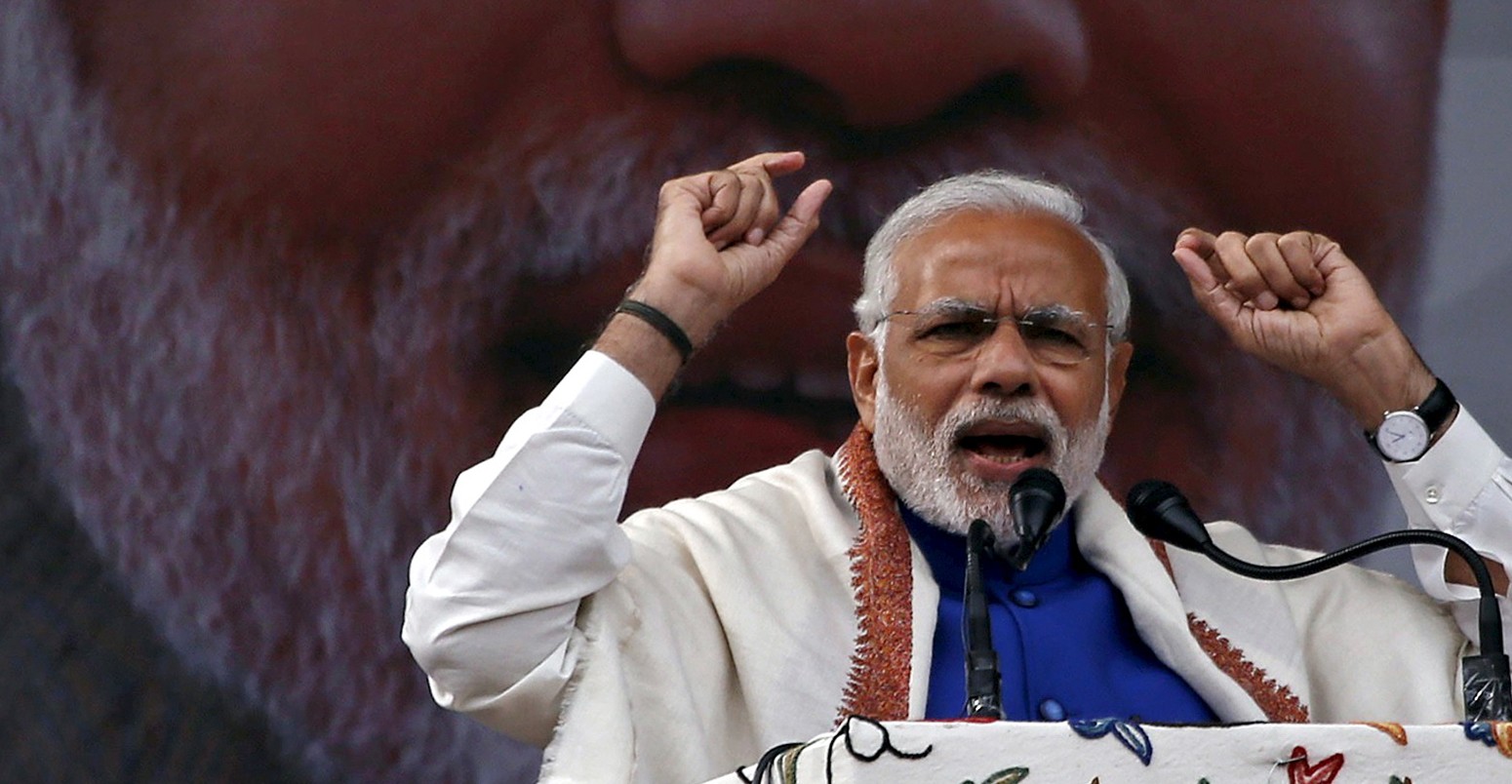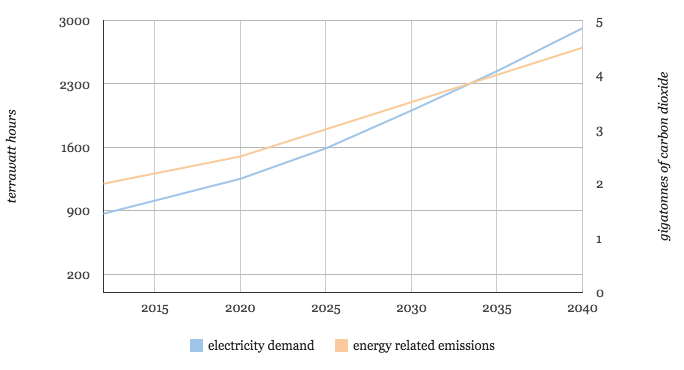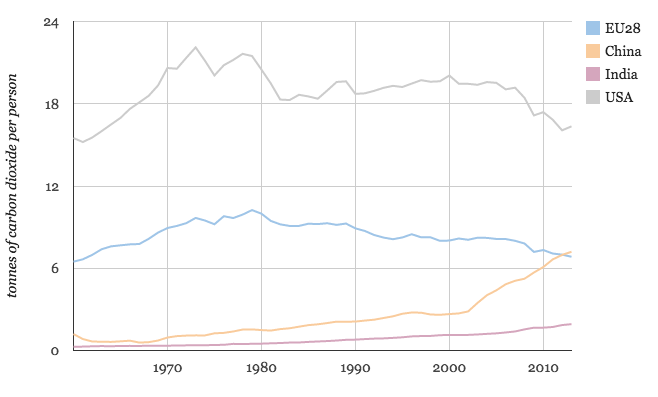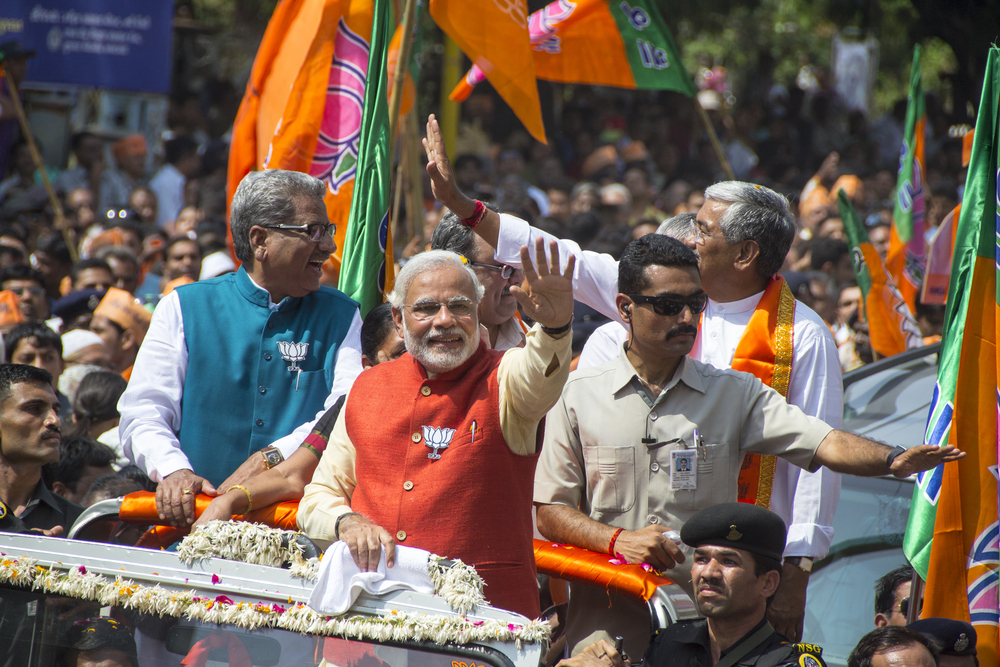
Is India’s prime minister, Narendra Modi, a climate leader?
Mat Hope
11.25.14Mat Hope
25.11.2014 | 2:00pmIn May, Narendra Modi was sworn in as the new prime minister of India. Many hoped he would prove a climate change champion. Six months later, those expectations have been tempered.
The next year is set to be crucial to the world’s chances of agreeing a new global climate deal. The US and China recently signed an historic deal to cut their country’s emissions. But if the world is going to successfully manage the risks of climate change, it will need India to play its part too.
Given India’s status as the world’s third largest emitter, negotiators are eager for the country to play a productive role at climate talks. So do Modi’s first six months give an indication of what stance India will take?
India’s international climate policies
Modi was elected promising to revive India’s economy. He sees the electrification of India as key to its economic development, and has made it a government priority to connect more than 300 million citizens to India’s power grid.
As a consequence, India’s electricity demand is likely to more than triple in the next thirty years, according to the International Energy Agency. That would mean India’s energy-related emissions more than doubling by 2040, as this IEA projection shows:

Source: Data from IEA World Energy Outlook 2014. Graph by Carbon Brief.
But while India’s overall emissions may be rising, the country’s emissions per person remain only a fraction of those in developed countries and rapidly-developing China:

Source: Data from Global Carbon Atlas. Graph by Carbon Brief.
High hopes
After his landmark victory, many commentators hoped Modi would place new emphasis on tackling climate change. Modi’s political history certainly suggested there was a good chance climate policy might rise up the government’s agenda.
Modi was chief minister of Gujarat before becoming prime minister. During that time, he created the government’s first climate change department and wrote a book calling for climate change action. He also had a two-day briefing on the causes and impacts of climate change with the Intergovernmental Panel on Climate Change’s chair, Rajendra Pachauri, and oversaw a renewable energy boom culminating in 70 per cent of India’s solar energy briefly coming from Gujarat.
In the run-up to this year’s national election, Modi’s manifesto promoted policies resembling US president Obama’s “all of the above” energy strategy, calling for the development of renewables and nuclear alongside gas and coal. He also adopted the mantra “make in India”, and indicated the country would pursue a lower carbon, more efficient, manufacturing model than developed countries historically have.
Modi’s prime ministerial campaign seemed to suggest he would carry such enthusiasm through to the national level.
One of his first acts as prime minister was to add climate change to the Department for Environment and Forests’ remit and name. He also pledged that solar power will enable every home to run at least one light bulb by 2019, and made it a government priority to improve the efficiency of India’s electricity system,
But it quickly became apparent that Modi only considers climate policy to be pragmatic as long as it fits with his primary goal: economic development. As Krishnan Pallassana, India Director at thinktank the Climate Group, tells Carbon Brief:
“India is in a catch 22 situation. It needs to rapidly enhance energy access and renewables offer only a part of the solution.”
Dubbed the “development man” during the election, Modi’s popularity was based on his promises of widespread riches and economic growth following the Gujarat model. Much of Gujarat’s development came as a consequence of the solar boom.
Modi principally saw solar power as a tool to deliver growth, rather than an ideological matter. If other technologies can deliver similar economic benefits, such as fossil fuels, then Modi looks happy to back them.
In particular, India’s government argues it’s hypocritical for developed countries to ask it to try and grow without the aid of cheap fossil fuelled energy, particularly when those developed economies continue to rely on coal to produce electricity. The US, for example, gets around 40 per cent of its electricity from coal, as does the UK. Germany, which is undergoing an ambitious transition to renewables, gets 45 per cent.
Both Modi and his environment minister Prakash Javadekar argue that climate talks must continue to revolve around the principle of common but differentiated responsibility. That means developed countries committing to quicker and deeper emissions cuts before developing countries are expected to act.
That’s pretty much the same line India’s government has always taken in international climate negotiations.
Domestic policy
Six month’s into Modi’s premiership, it’s clear that in a tussle between economic growth and curbing emissions, India’s government continues to favour the former.
Modi faces a dilemma. India has the world’s third largest coal reserves, and developing the country’s coal resources could potentially boost short-term economic growth by providing widespread cheap energy. But burning lots of coal is bad for the climate and climate impacts could curb India’s long term economic development.
The Modi government’s actions so far suggest a preference for immediate growth. India’s environment minister has promised to double India’s use of domestically sourced coal from 565 million tons last year to more than a billion tons by 2019, the New York Times reports.
The government is also trying to sell coal-mining licenses as swiftly as possible and has cut red tape to allow existing coal mines to expand without public scrutiny. Rapid expansion of India’s coal industry could undo the combined benefit of the EU, US and China’s pledges to cut emissions, according to environmental commentator Mark Lynas.
It’s a similar story when it comes to India’s forests. Modi’s government has diluted legislation so that much of the country’s woodland is exempt from environmental protection.
India’s 70 million hectares of forest currently absorbs the equivalent of 11 per cent of the country’s emissions. Previous governments had managed to stabilise deforestation, but 1,600 hectares of forest was cleared in Modi’s first 100 days, according to some reports.
Development first
Modi’s growth-first agenda might not suggest he is a natural climate policy leader. But his personality and popularity with voters may increase the chances of India participating constructively on a global level.
Justin Guay, director of environmental NGO the Sierra Club’s climate program, tells Carbon Brief:
“Modi’s whole image, and what resonates with the average voter in India, is that he is going to clear up the red tape, he is going to clear away the bureaucratic morass, and he is going to get things done at the end of the day. So for him to go an international meeting and play the role India has historically played which is to potentially trying and dodge any kind of deal and not allow anything to go forward, I find that really hard to believe.”
India’s previous government tried to prevent countries extending the Kyoto protocol in 2012, and blocked negotiations in Warsaw last year due to concerns over low carbon farming procedures. Modi’s personality combined with his willingness to take a low carbon path if it can be shown to be economically beneficial to his constituents, suggests he may be more willing than previous governments to work towards a new global climate deal.
While Modi might not be a climate leader at home, his leadership means India may no longer be an immovable object at the international level. Juggling domestic development and global climate participation could prove to be a tough act, however.


